Issue 2 Flipbook
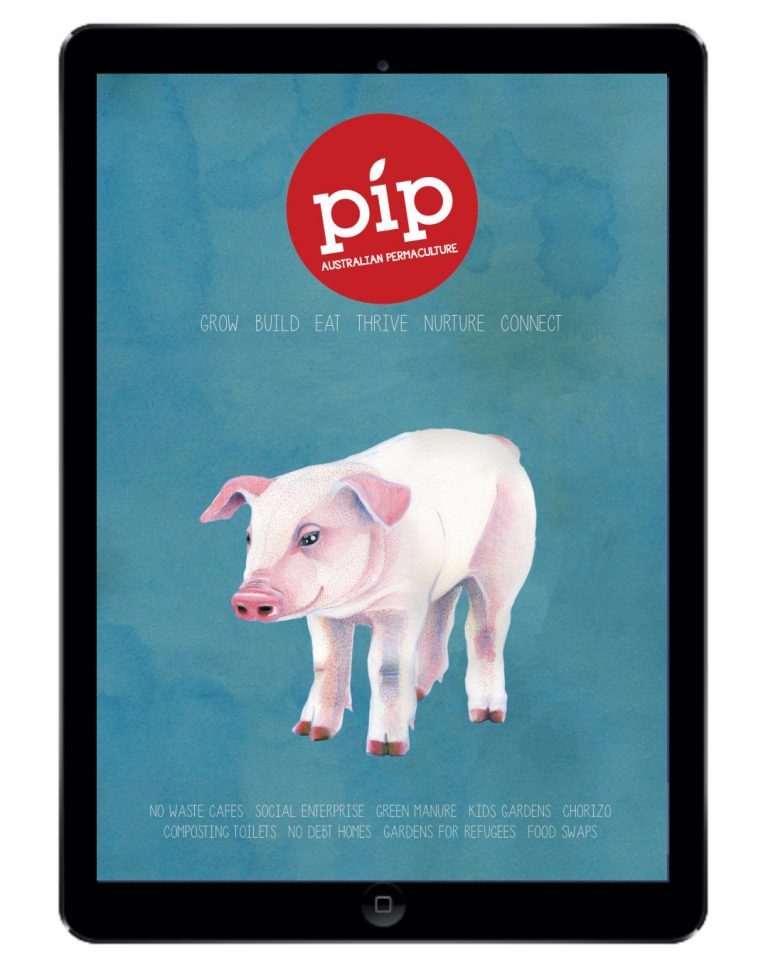
Read issue 2 as a flipbook

Read issue 2 as a flipbook
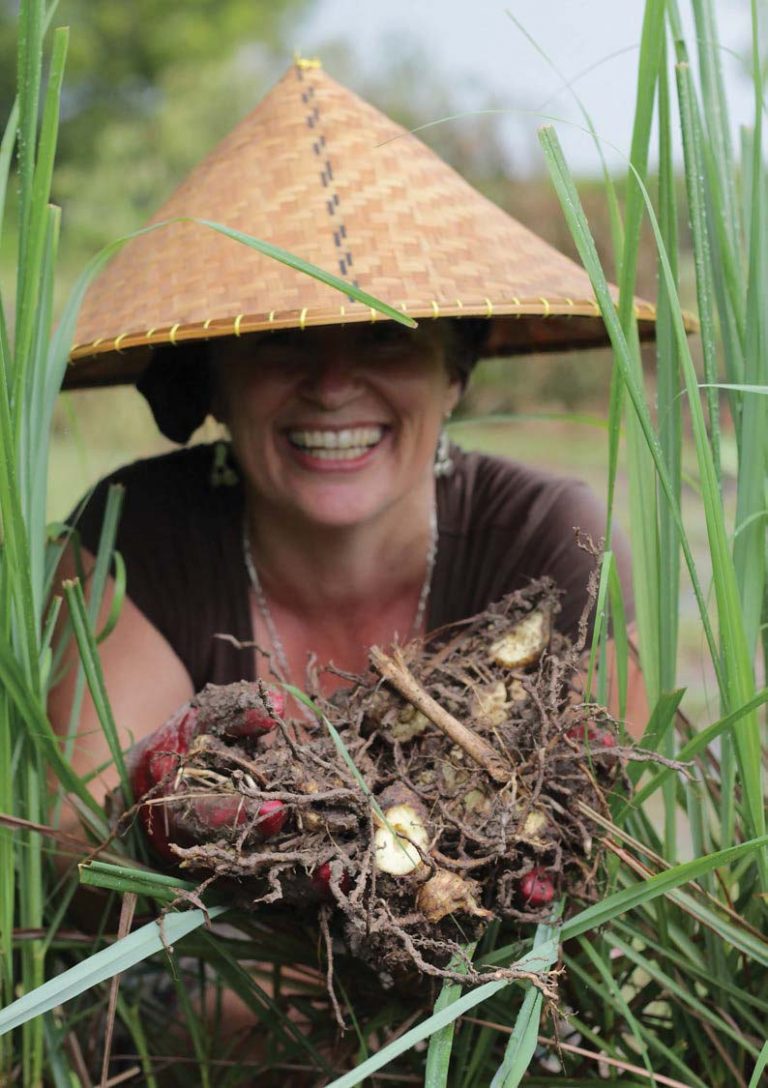
This article is about the little network that could. A low-key, flexible organisation made up of permaculturalists, community gardeners, teachers and Northern Territory Department of Education staff working together to make growing and cooking organic, local food a key part of daily life in the Top End. Throw in a bit of resilient communities’ action, and sustainable design and practice, and we are really getting somewhere!
There are many joys of living in the Top End and many challenges, and often these are the opposite sides of the same coin. The climate is more like that in South-East Asia than in most of Australia. Top Enders, like most Australians, love eating at Asian restaurants. However, if you look closely at those Asian dishes you are more likely to find broccoli, celery and potato in them than snake gourd, winged beans or sweet potato. Hence the challenge: to share with Top Enders the information and skills to help them grow all sorts of amazing foods, and to cook with them.
There have been dedicated permaculturalists in Darwin for many years. However, in the last ten years we’ve seen an amazing increase in the number of keen permies and local foodies. Partly because of another challenge – remoteness, and the huge amount of ‘food miles’ and extra costs associated with buying food. But also because of broader community interest in growing food more locally and sustainably.
A critical mass was reached when Rosemary Morrow taught a Permaculture Design Course (PDC) here in 2008.
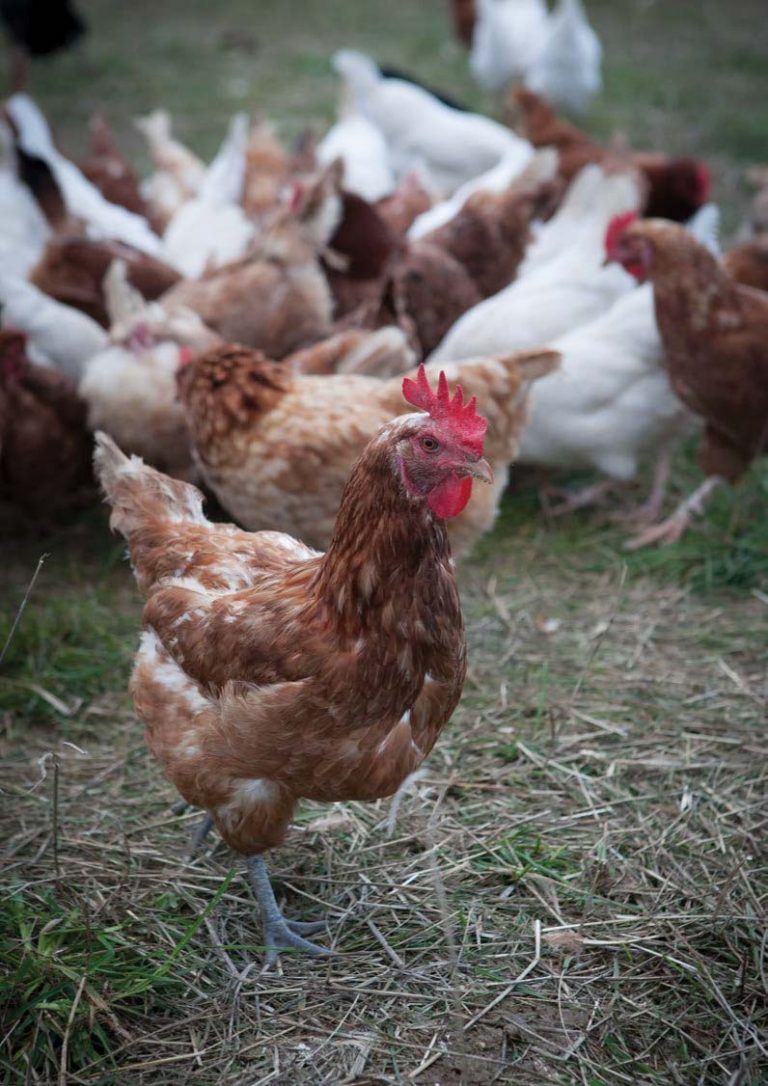
When I talk about my lifestyle, people always seem to be fascinated by the fact that I kill and butcher meat at home – I presume because it is so far removed from most people’s experience (and because it is an unpleasant process). They seem even more bemused if they know that I love animals.
Keeping animals, and eating meat, allows our family to lead a more sustainable and self-sufficient lifestyle. This is contrary to conventional thinking – meat eating is normally associated with a higher environmental footprint. This is certainly the case in industrial agricultural systems where animal production is not integrated with other farming systems: many animals are raised on food that could be consumed by humans, and the waste produced from intensive systems becomes a disposal problem.
Integrated plants and animals have up until very recently been the norm in agricultural systems throughout the world. Animals excel at concentrating protein for human consumption. They turn material humans cannot eat, for example kitchen and garden scraps, leaves and grasses, into high-quality protein for human consumption.
Trying to grow our family’s protein directly – for instance in the form of soybeans or other legumes – would be impossible in our permaculture system.
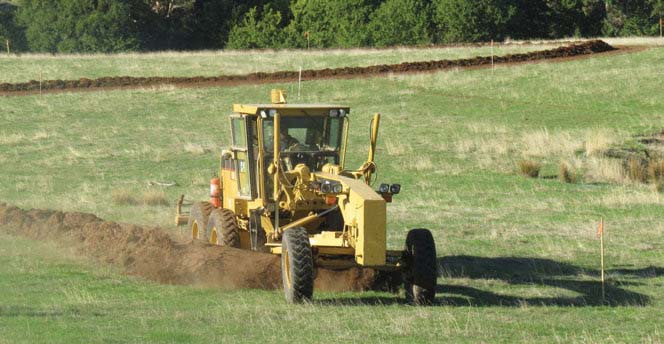
Bulldozers are often seen as symbols of destruction, but when they are in the hands of a permaculture designer they bring about a transformation of rural landscapes beyond anything that can be achieved by hand. Yandoit Farm, between Castlemaine and Daylesford in Central Victoria, is undergoing a five-year wholefarm makeover. In April this year, many litres of diesel were burned in a permaculture festival of earth moving! These once-in-a-lifetime landscape improvements were carried out alongside an earthworks course so that students could get direct experience of the process.
When Michael and Lisa Jackson bought this beautiful 140 acre property along the Jim Crow Creek, they took on a going concern, with tractors, equipment, a shed full of hay … and cows, lots of them. With a great sense of responsibility for their sixtysix newly acquired family members, they dived into everything bovine. Michael said, ‘It wasn’t long before we noticed health issues emerging within the herd. Although minor and considered “normal” by traditional farming folk, we weren’t comfortable with this. A friend introduced us to Pat Colby’s book Natural Farming [Scribe Publications, 2004] which provided many of the answers. The overgrazing had depleted key minerals and compacted the soil drastically, reducing its microbial biodiversity. Sick soil = sick pasture = sick cows, and so the quest began. We are fortunate to have David Holmgren, Dan Palmer and Darren Doherty in the area and, as well as drawing on their advice, we have completed our PDCs and are fully focused on the regeneration of Yandoit Farm.’
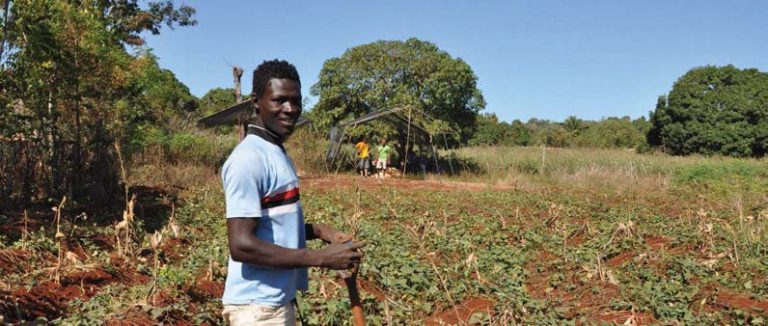
Gonâve island, fifteen kilometres wide and sixty kilometres long, lies under the Haitian sun. What once would have been a rich ecology is now as seriously degraded as the mainland. Even in its degraded state 50,000 sought refuge there after the 2010 earthquake.
While most refugees have since returned to the mainland, there are 100,000 people who live permanently on the island. Most live a subsistence life based on charcoal production, agriculture and fishing, but after decades of charcoal production the island’s fertility and water resources are seriously degraded. Locally produced foods still include flour (mainly cassava), coffee, fruit and fish, but ninety per cent of the island now relies on food imported on the local ferry, mostly unhealthy products or aid food.
There is no running water or sewerage and as the level of groundwater has dropped many village wells now have reduced inflow. Many households survive on meagre amounts. A 2011 survey showed the average water use per person was only 7 l/person/ day. This is one of the most waterpoor communities in the world. One household offered their ‘coping strategy’ as saving their urine each night so they could use it the next day if they couldn’t find water. Many households use dirty water, as that’s the only water available. Water-borne diseases of diarrhoea and typhoid are common and cholera outbreaks have also been occurring. There is extraordinary human deprivation in these communities. There is only two kilometres of paved road on the whole island and electricity only in the main town between 6 pm and midnight, most days. There are virtually no government services of schools, roads, police, electricity, reticulated water or health services. The communities fend for themselves.
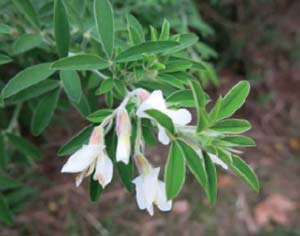
Botanical name: Cytisus proliferus
Common names: tagasaste, tree lucerne
Origin: Canary Islands
Description: a fast growing, deep rooted, evergreen leguminous shrub or small tree with prolific white flowers in late winter and early spring.
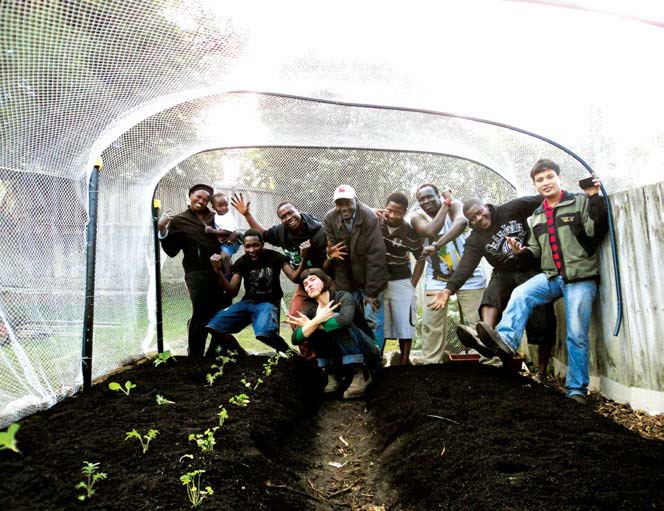
A regular part of our work at Good Life Permaculture is based around community development and social permaculture principles. We’ve found that when you work with people to improve knowledge, skill, health and wellbeing, other problems are also solved or lessened; and this can ripple into the community and the world beyond. You get the idea: from little things, big things grow.
Live and Learn is an adult education program initiated by Sustainable Living Tasmania (SLT), which focuses on providing practical skills in living sustainably, to decrease the cost of living and increase the quality of life. The course usually runs over six weeks, covering a different topic each week including: gardening; transport; water; waste; health and wellbeing; and building and energy.
In early 2014, SLT partnered with The Phoenix Centre (part of the Migrant Resource Centre) to offer a tailored Live and Learn program to some in the local refugee community. The course was based on producing food in a cold climate – refugees from hot countries were baffled by the Tasmanian weather. Good Life Permaculture was engaged to deliver the program, which we loved doing. Here are some of our reflections about why we support ‘social permaculture’ projects.
We designed the project so that we didn’t have any time inside lecturing people.

Part memoir, part manifesto, The Simple Life arose from Hetzel’s passion for sharing and storytelling. Central to her simple life is the role of the home, and how it can have a profound effect on the way we view the world outside it: spending more time at home – cooking, cleaning, growing produce, knitting, mending, creating – made her ‘kinder, calmer, and more patient’. No longer did she need the money-sapping thrills of outside of the home – such as shops and cafés – to feel happy. She realised that happiness can exist in the simple things, and that producing is much more rewarding than consuming. And that the home should not be relegated to the status of ‘that place you spend time in at the beginning and end of the day’.
The Simple Life is Hetzel’s second book, following on from the inspiring Down to Earth (2012, Penguin), a manual for simple living, for which she has a blog of the same name. If there is one useful and timely nugget to take out of this book it’s that by simplifying one’s life – avoiding the temptations of spending money as a hobby – and viewing the home as a centre for creation, new pleasures will arise and you’ll save money.
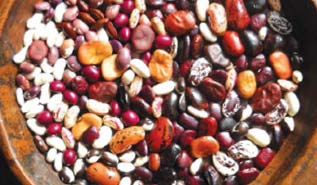
Saving seeds is magical, economical, political and essential, all at the same time. It projects us into a future of abundance and security by nurturing our local food supply.
It’s spring! So it’s a great time to start with a small handful of beans. Check out www.grow-it-organically.com/green-bean-varieties.html if you need help to choose a variety. And then follow these simple steps.
Decide what quantity you want to save – for seed for next year, for eating green and maybe some for putting aside for a winter stew.
Choose a non-hybrid variety. If your local seed savers don’t have what you want, see the big range at www.aussieorganicgardening.com/2011/11/open-pollinatedseed-suppliers/
Set aside a number of plants in the row for seed only. At the end of the season when the plant has turned brown, remove these at ground level and hang them in a dry spot. Or, eat beans as the plants grow, and remember to leave some pods to dry out at the end of the season.
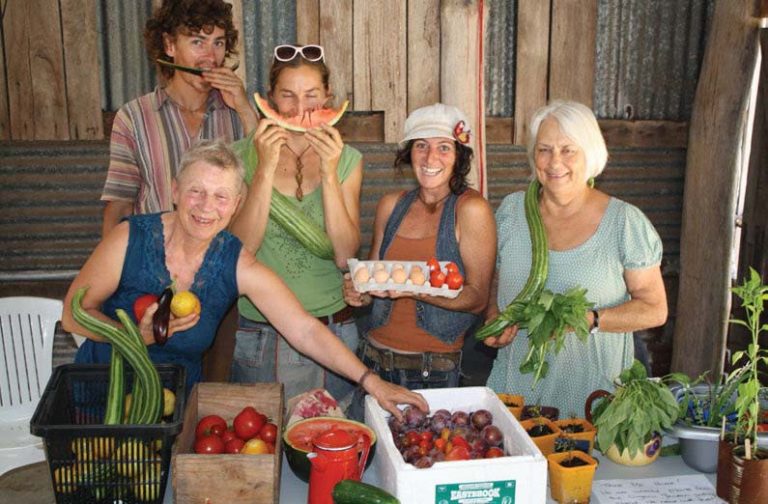
Produce swaps are community driven events where growers come together to share excess seeds, plants and produce; they involve no direct exchange, or any form of payment. They are also places to meet and exchange ideas and information and, consequently, encourage and inspire local food growing.
WHY SWAP PRODUCE?
For me produce swapping is permaculture in action, it is: ‘earth care’ by encouraging local food growing; ‘people care’ by bringing community together over good wholesome food; and ‘fair share’ by providing growers with an opportunity to share their excess, without having to organise a place at a market or an honesty box at the front gate.